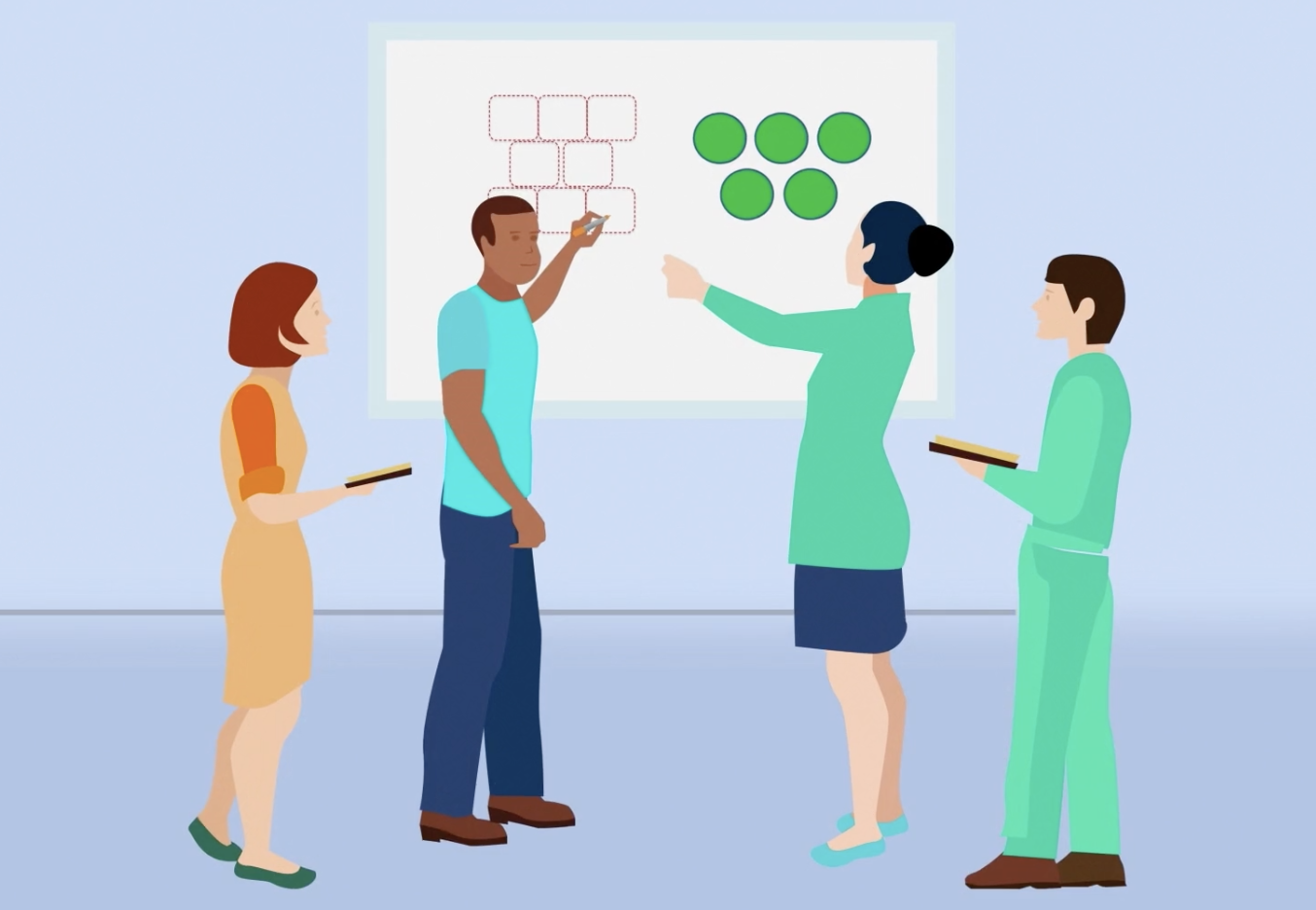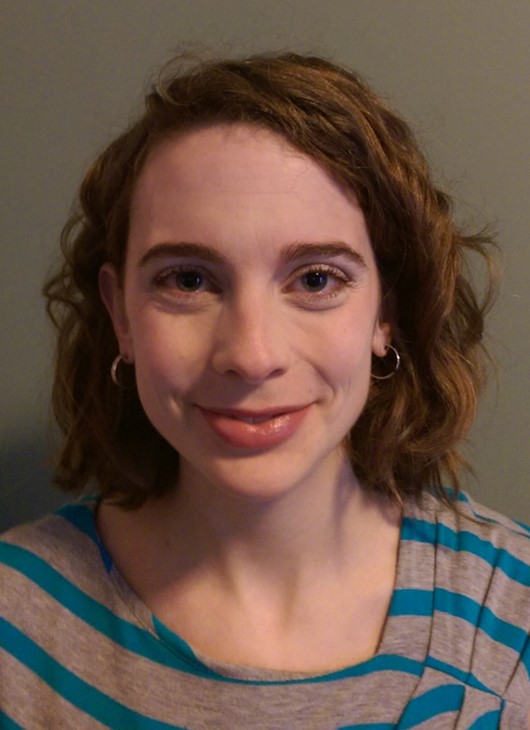Meeting the Needs of Numeracy-Level Math Students (GLE<2)
by Melissa Braaten

What is numeracy? In general, the word numeracy is the math equivalent of literacy: the ability to flexibly and accurately use numbers, shapes, and data to communicate and solve problems. When students are first starting out learning reading and writing skills, we often refer to that level as “literacy-level.” Most programs who serve students at this level offer specific literacy-level classes to meet the unique content needs of literacy students, such as phonemic awareness and basic phonics. In the same way, “numeracy-level” students are students who need to develop beginning-level math skills, such as accurate methods for counting, an understanding of how numbers can be created with tens and ones, or single digit addition and subtraction. This numeracy-level content is described in College and Career Readiness Standards for Adult Education Level A (see pages 51-53) and corresponds to Grade Level Equivalent (GLE) K-1. Compared to the needs of literacy-level students, there seems to be less awareness of numeracy-level students and their needs, both from the perspective of policy and available adult education curricula.
I have been teaching math to adult students for 11 years in Dorchester, Massachusetts and I’ve worked with a huge variety of students. Along the way, I noticed that there were a small number of students whose needs were not being met in my “beginner-level” classes. Differentiation strategies didn’t work, because they needed to work on different content than the other students. Eventually, I had a small group of students who fit into this category and a sympathetic director, and I was able to create a numeracy-level math class for this group of students. I’ve been running this class for over two years now (both in person and remotely during the pandemic), and have learned a few things along the way that seem to work better at meeting the needs of these students.
1. They need their own class
The content in CCRSAE Level A is a foundation for everything that comes later: counting, reading and writing two-digit numbers, skip counting, understanding basic addition through 20. This content is not usually taught (or needed) in classes that serve the majority of beginning-level math learners (GLE 2-4). In addition, numeracy-level learners usually benefit academically from a smaller class size and more attention, since many may have disabilities. Their pace of learning may be slow and require more repetition and cycling back than other groups. Lastly, but equally as important, is the emotional experience of being in a class where their classmates have similar strengths and struggles. Adults who struggle with very basic math skills have often internalized a very strong sense that they cannot do math, and constantly being the outlier in a higher-level class is often a painful reinforcement of this belief.
Since there may only be a handful of students (or maybe just one) at a particular program needing numeracy instruction, programs may want to consider teaming up with other nearby programs to consolidate numeracy students into one in-person or virtual class.
2. Early math skills require more teaching skills.
Sometimes we mistake the level of content with the skill required to teach that content. Numeracy students are building the most essential foundational math skills, and may have some of the most significant learning challenges. They need to work with the most experienced teacher, rather than a teacher with no math experience or a volunteer.
3. They need appropriate curricula and assessment.
Some of the materials promoted for adult students in Massachusetts, such as the Curriculum for Adults Learning Math (CALM) and the EMPower materials do not address standards at CCRSAE Level A. Instead, I found that I could adapt a conceptual math curriculum designed for elementary students for my adults, which led to both engagement and learning gains. Also, note some instruments, like the Massachusetts Adult Proficiency Test (MAPT) math test, do not assess skills below GLE 2, which means that it does not assess numeracy-level skills. The only NRS-approved assessment for math skills at this level is the math portion of the TABE – Literacy.
The three needs outlined above may not be completely in the control of a specific teacher or program. These are things that could be considered at a policy level, such as how can we incentivize programs to provide these classes, and make sure teachers with the right skills are available to teach them and have the curricula they need. However, there are some things any teacher can do to help support these students in the imperfect arrangements we often find ourselves in:
Good math teaching is good math teaching.
All of the strategies for teaching rigorously and conceptually to other levels of students also apply to students at the numeracy level. Memorization and drills are the lowest cognitive challenge, and do not help students build their conceptual understanding or higher order problem solving skills. Numeracy-level students need cognitively challenging tasks just like all other adult math students. They benefit from visuals and manipulatives and games and meaningful applications of math to their lives. All of the teaching strategies we promote at the Adult Numeracy Center / SABES Math Center are just as appropriate for numeracy-level students, and many of them have a basis in Universal Design for Learning, such that they can help make math accessible to learners with various challenges.
For example, consider each of these tasks which address content at CCRSAE Level A:
Task 1
Solve:
4 + 3 =
7 – 6 =
2 + 4 =
Task 2
Adding and Subtracting within 10
Using the digits 1 to 9 at most one time each, place a digit in each box to make a true statement.


While both tasks address numeracy-level content, the first task is mainly memorization. The second task, while addressing content that is at a very early level, has a much greater level of cognitive challenge. It requires perseverance and problem solving, and allows students to explore patterns and the meaning of the equal sign.
Keep students’ goals in mind.
Students at this level are unlikely to be earning a high school equivalency in the short term, so it is important to be aware of their goals for improving their math skills. What daily tasks would they like to be able to do better? (My students emphasized wanting to be better at counting money and understanding their work schedule.)
Reach out for help!
Don’t forget that our adult numeracy team is here to support you. (If you happen to be a teacher at a Massachusetts program, one-on-one coaching is also available on request.) If you have some students whom you are not sure how to support, please reach out to us at adultnumeracy@terc.edu.

Melissa Braaten is an adult education instructor at Catholic Charities Haitian Multi-Services Center in Dorchester, MA. Melissa has taught ASE and pre-ASE math and reading, as well as ABE writing, computer skills, and health classes. Melissa also is a training and curriculum development specialist for the SABES Mathematics and Adult Numeracy Curriculum & Instruction PD Center at TERC. She has written several articles for Math Musings, the Adult Numeracy blog.
